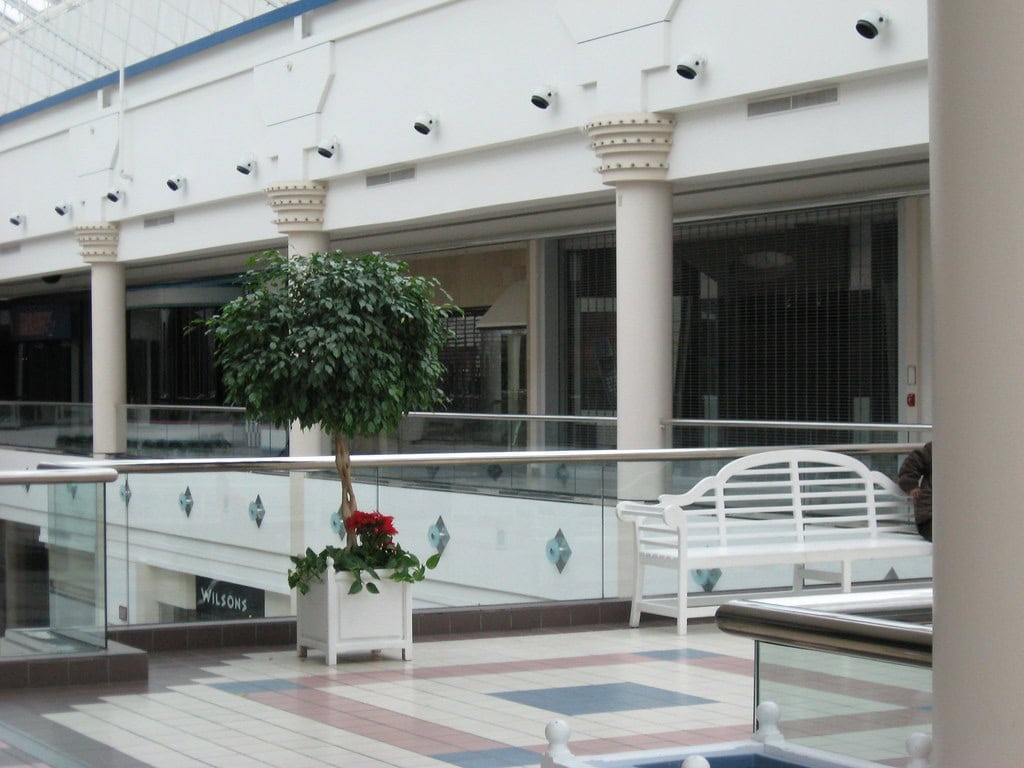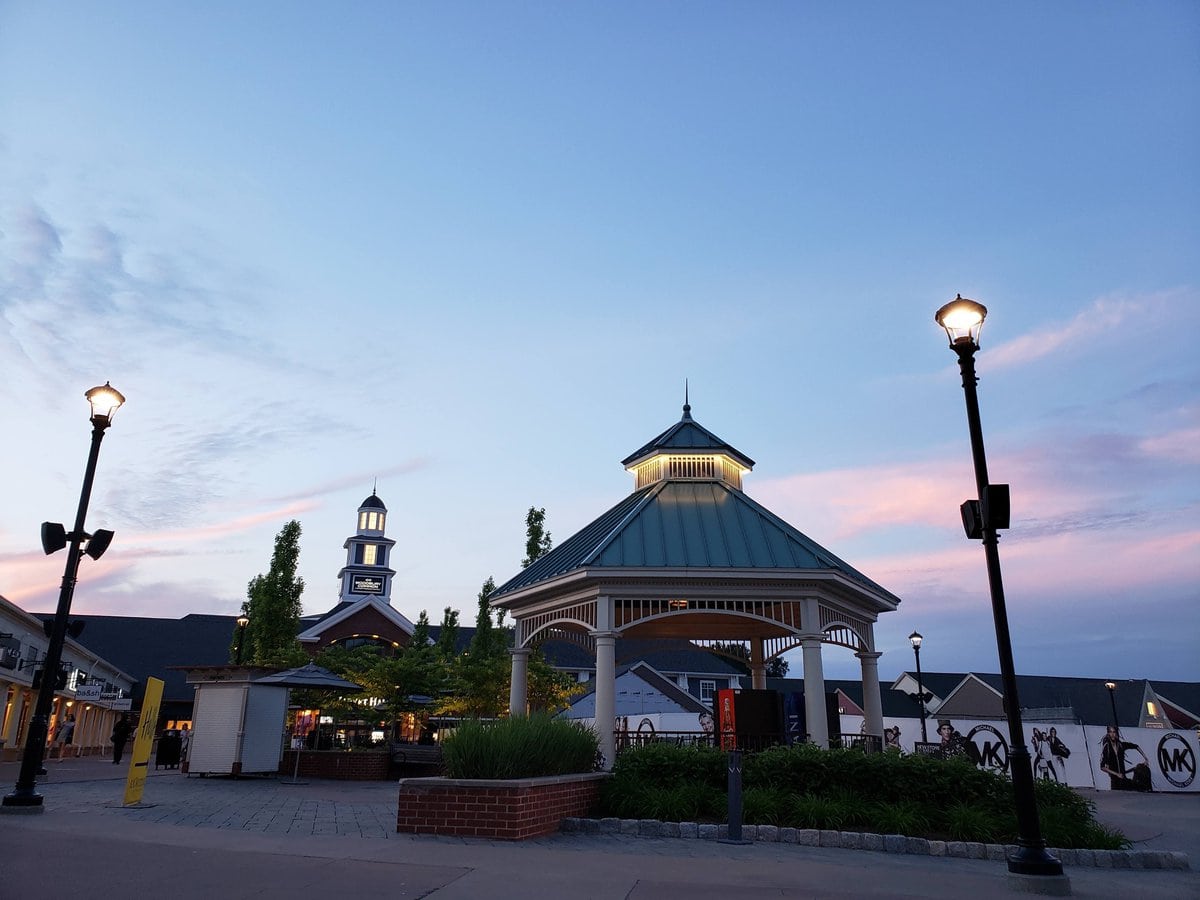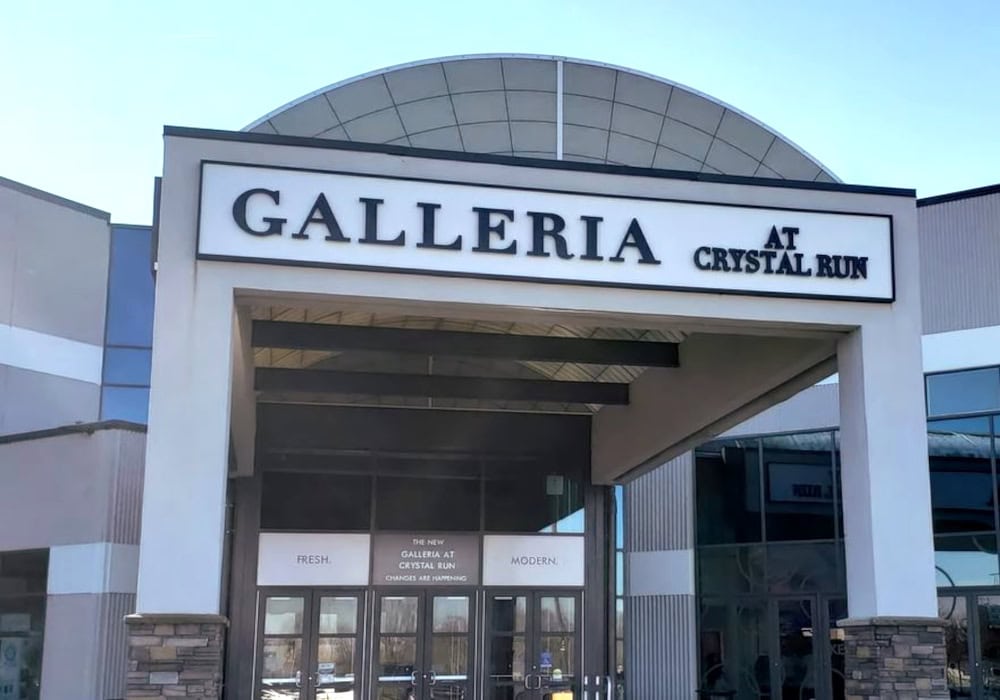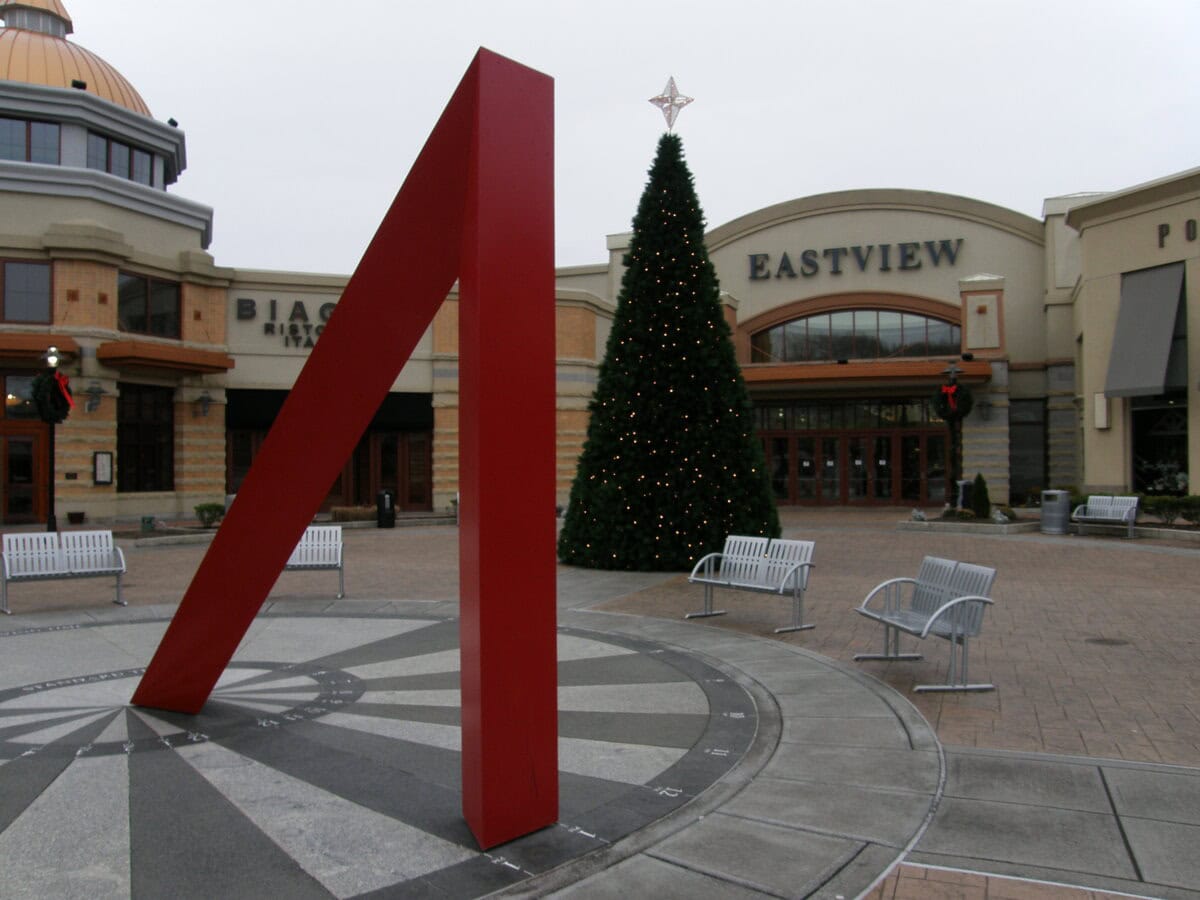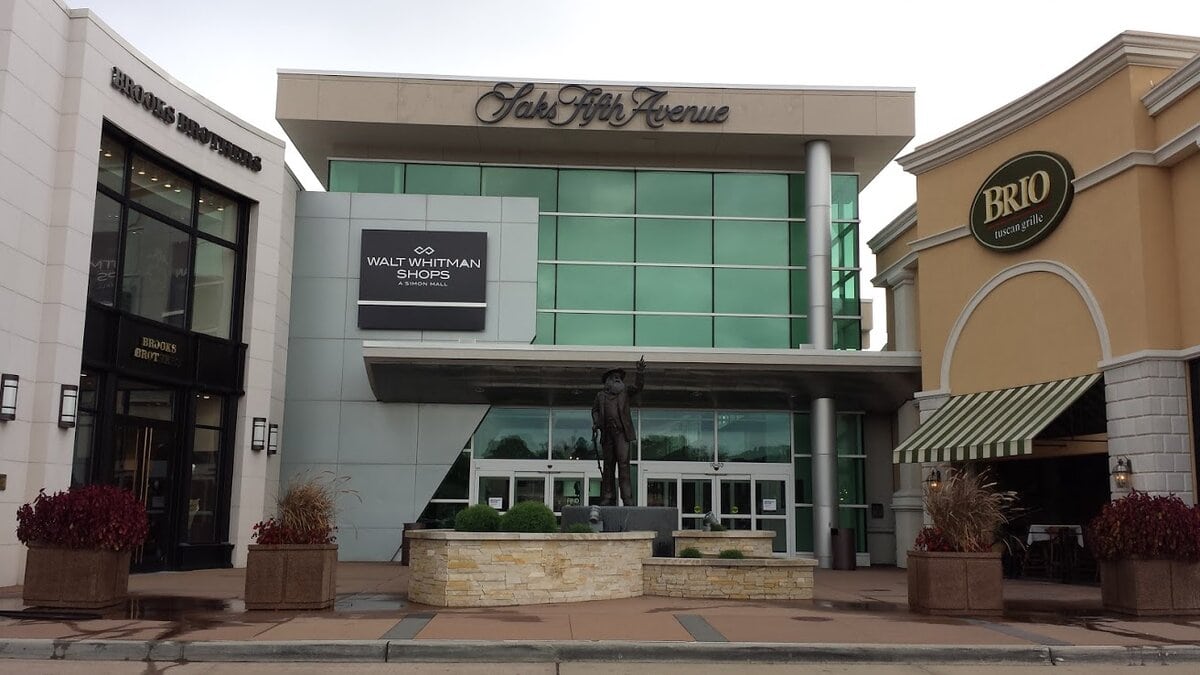Irondequoit Mall Opens Its Doors
The morning of March 1, 1990, marked the debut of Irondequoit Mall, a major new retail center along East Ridge Road in Irondequoit, NY.
Built by Wilmorite Inc. at a cost of eighty million dollars, the two-level complex introduced regional-scale shopping to the town.
Opening day featured skylit corridors, more than one hundred stores, and the first suburban two-story mall in the Rochester area.
Planning and Conception
In June 1985, Wilmorite Inc. announced plans for a 650,000-square-foot regional mall in Irondequoit.
The Rochester-based developer had already built several major centers in Monroe County, including The Marketplace Mall, Eastview Mall, and The Mall at Greece Ridge.
The Irondequoit site, located near Route 104 and North Goodman Street, had been largely vacant except for a Kodak Copy Products facility.
The plan called for a climate-controlled shopping complex with major department store anchors and a hundred smaller tenants.
From the start, Wilmorite described it as a significant addition to the region's retail network.
The project, estimated at eighty million dollars, aimed to serve the northeast quadrant of the county and provide new employment opportunities in both construction and retail operations.
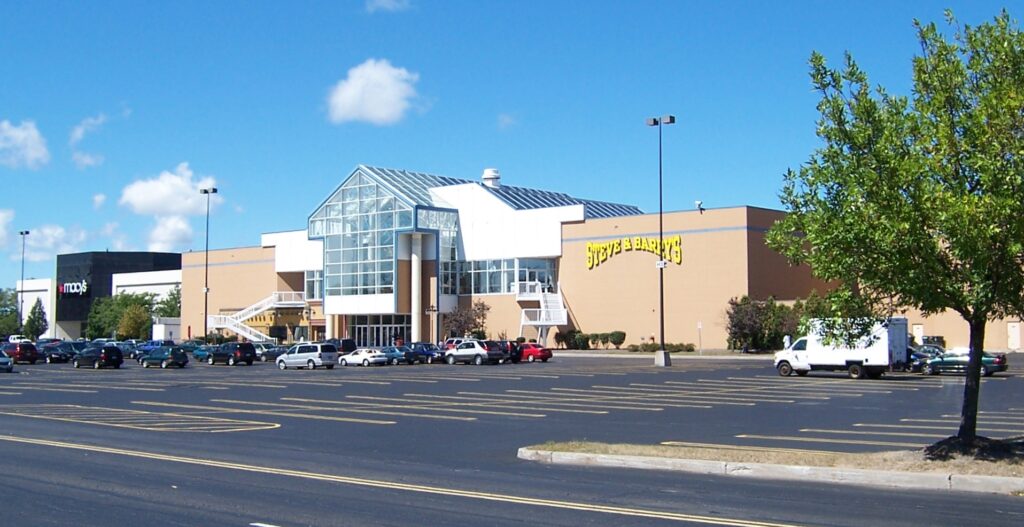
Approvals and Challenges
Public attention grew rapidly after the project's first presentation at Irondequoit Town Hall on January 16, 1986.
The meeting drew more than four hundred residents and continued for six and a half hours.
Many expressed concerns over traffic and environmental impact, while others questioned the need for another mall in an already competitive retail market.
Opposition soon moved to the courts.
A group of residents filed a lawsuit to block the development, and a competing developer from Nassau County, who had proposed a separate mall in nearby Webster, threatened legal action against Wilmorite.
For two years, the project remained tied up in litigation.
A New York State Supreme Court justice ultimately granted approval to proceed, a decision later upheld by the state's Court of Appeals.
During that same period, a controversy emerged when Town Supervisor Eugene Mazzola Jr. was found to hold an interest in a plaza planned across from the proposed mall.
Officials cited a potential conflict of interest, and Mazzola later sold his share to resolve the issue.
By late 1987, all major legal and political obstacles had been cleared.
Construction and Design
Construction began in the area around East Ridge Road and Route 104 in late 1987 or 1988, with LeChase Construction as general contractor.
The mall's design evolved from its initial plan, expanding to roughly 800,000 to 824,000 square feet at completion.
Its two-level configuration made it the first suburban enclosed mall of its kind in the Rochester region.
Architectural features included a vast glass skylight roof supported by a space-frame structure, allowing natural light into interior concourses.
The layout centered around a fountain court with a reflecting pool, vibrant color schemes, and interior plantings.
The upper level housed a food court highlighted by a handcrafted double-decker carousel with an Iroquois motif, built in Italy specifically for the mall.
The property was managed by Genesee Management Inc., part of the Wilmorite group, and leased through Wilmorite's in-house division.
When construction finished, the complex stood as one of the most ambitious retail developments in Monroe County.
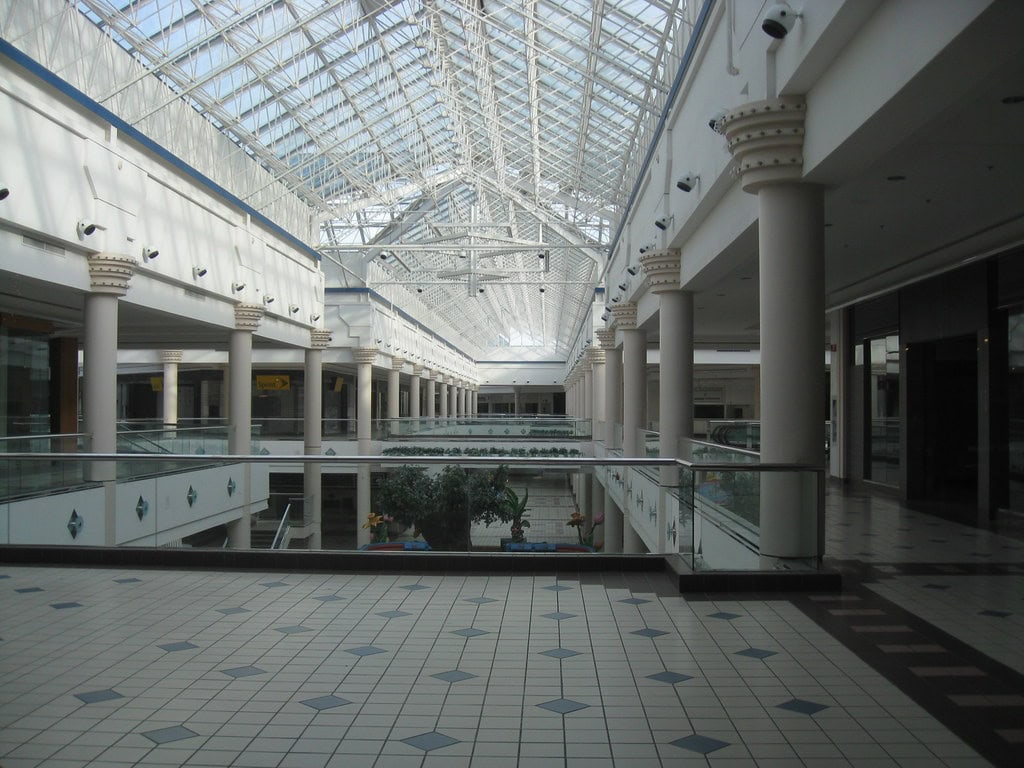
Opening Day
A private preview dinner was held on February 28, 1990, for approximately twelve hundred guests, including tenants, civic leaders, and local officials.
The event featured entertainment by composer Marvin Hamlisch and remarks by Rudolph Giuliani.
The public opening followed on March 1, 1990.
Crowds filled the new mall as television cameras from Rochester's Channel 13 recorded the ceremony.
Sears and Kaufmann's opened that morning, while J.C. Penney was scheduled to follow later in the spring.
Opening-weekend attendance reached an estimated eighty thousand visitors, with spending of about four million dollars.
The promotional centerpiece was a car giveaway called "The Best of Everything," offering shoppers a chance to win new vehicles from Hoselton Automotive.
Store-specific discounts and events extended throughout March. The mall's marketing slogan, "It's New!
It's You! It's Exciting!" appeared across newspaper inserts and broadcast spots.
Inside, 114 stores filled the directory, ranging from apparel and jewelry to books and sporting goods.
The food court featured more than a dozen eateries, including Sbarro, Burger King, Arby's, Olga's Kitchen, Häagen-Dazs, and Baskin-Robbins.
General Cinema added multiple screens, further anchoring the mall as both a retail and an entertainment destination.
Civic Context and Impact
Irondequoit Mall's completion closed five years of civic debate that had tested the town's planning processes and political patience.
By the time doors opened, all lawsuits and conflicts had been resolved, and the development stood as a statement of suburban growth at the edge of Lake Ontario.
For residents, it brought national retail brands to an area long defined by smaller plazas.
For Wilmorite, it represented the company's continued dominance in regional mall development.
The structure's modern design and amenities introduced a new visual landmark to East Ridge Road, reinforcing the town's role within greater Rochester's economic landscape.
Conclusion
Irondequoit Mall opened as a carefully executed example of late-20th-century suburban planning.
Its skylit concourses, two-level design, and handcrafted carousel reflected both the optimism and the scale of its era.
On that first March morning in 1990, the mall's glass roof caught the light of early spring as crowds stepped inside, a new civic centerpiece, built for commerce, and briefly, a symbol of ambition fulfilled.
